Ok, let’s do a plant post! I’m writing posts more often, so I should have started monthly posts like this back in January, but I didn’t, so I will now. It’s not like I don’t have enough plants, I think many just have not looked nice enough but I’m over that. The garden has looked pretty nice all summer other than my piles of unplanted things.
But that’s a whole other post…
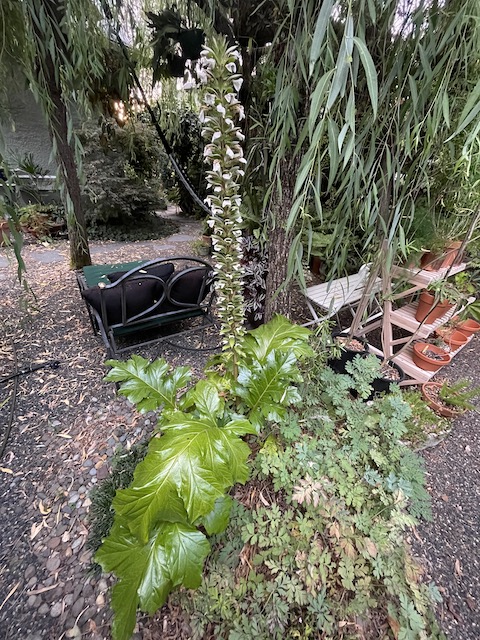
1.) Acanthus mollis ‘Hollard’s Gold’
I kind of avoided Acanthus for fear of it eating the back garden, but then I was talked into this golden from since it’s allegedly not as vigorous. Well, so far, it’s been very well behaved and that flower stalk has lasted for months. It just won’t stop and it makes for a lovely display. I’m even ok with it spreading a bit more. There is only a small walkway behind it and I am tired of the weedy low Dicentra cultivar that’s been there. I blooms, looks great, and then it’s ratty and fried for the rest of the summer.
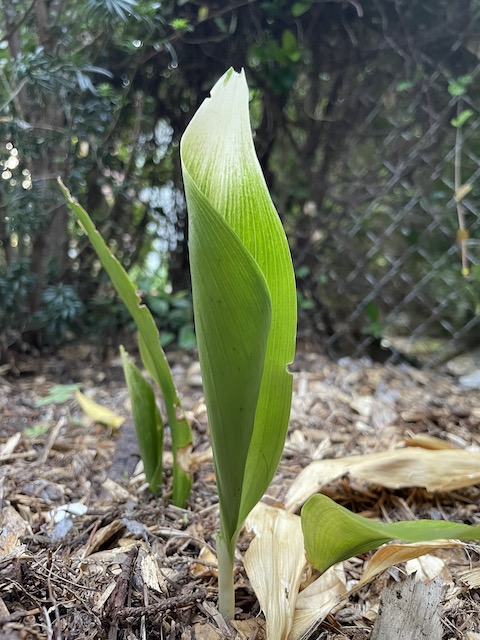
2.) Aspidistra elatior ‘Asahi’
When I first started working at Secret Garden Growers I divided some of these plants. What settled into the pots was quickly sold, and there were no more left for me to purchase. When I divided some more, that second time I made sure to grab one for myself. While this doesn’t look like much, blame the gardener in this case, and not the plant. I kind of let this one get gobbled up by some weeds all of last summer so it’s only now really coming into its own. I was thrilled to see this white tip emerge just recently. (And yes, I will apply some Sluggo soon.
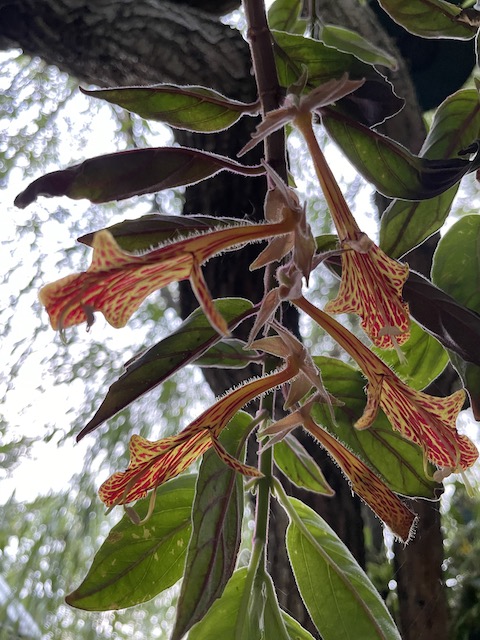
3.) Columnea schiedeana
Gesneriads can take years to grow out from small starts. As they grow, you need to take addition cuttings to add to their containers just to bulk them up a bit. Little by little this work will pay off for you, but it requires a great deal of patience and skill. At any point, it’s not unusual for one of these to croak on you. In this climate, keeping them happy enough for this long takes some finesse so seeing this plant in full bloom right now makes all of the fussing worth it. I think this one came from a member of our Gesneriad Society chapter, Mt Hood Gesneriad Society.
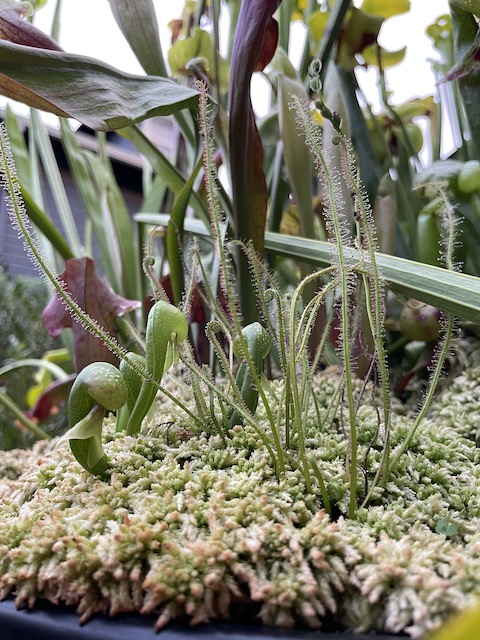
4.) Darlingtonia californica
While this little patch of Darlingtonia doesn’t look like a lot, they are the newest babies that have grown off of my older little colony. I started with one purchased colony from Sarracenia Northwest and then as second group came along when I was able to grow some from seed. Of all of the hardy carnivorous plants, these are my favorite.
It breaks my heart though to have seen poaching of them in Southern Oregon in the wild this last year. It’s one of my favorite native plants and I hope that you can see why. Please, if you want one, purchase them only from growers who are growing crops in cultivation. It’s my hope that eventually, I’ll be able to sell a few, but with this being of low priority, don’t expect those to be available from me anytime soon.
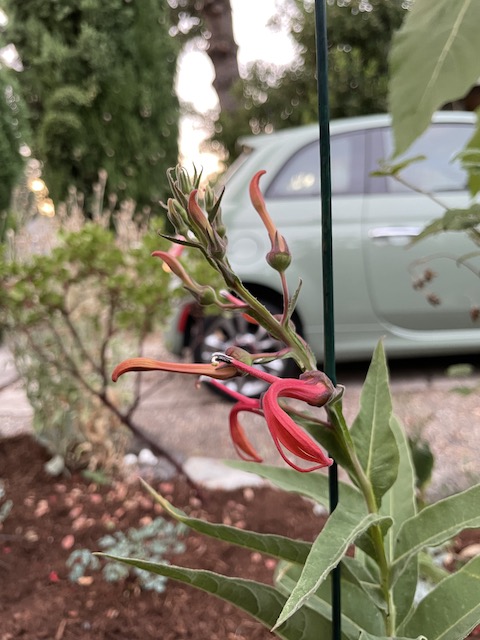
5.) Lobelia tupa – orange
Well, this should look more orange I think. I haven’t had the time to compare it to the photos I have from Heronswood, but I will be patient with it. While it is not as red as the straight species, I don’t think that this division (what I can only assume it is) is as orange as the ones I saw when I fell in love with it there. This plant needs room and sunshine. I’ve sort of allotted it a nice spot in the garden. Even if the color is mediocre, I am sure that I will forgive the meh factor. This is a great species plant no matter what and I might just accept it. I have waited so long to have it here, it is a relief to see it in bloom.
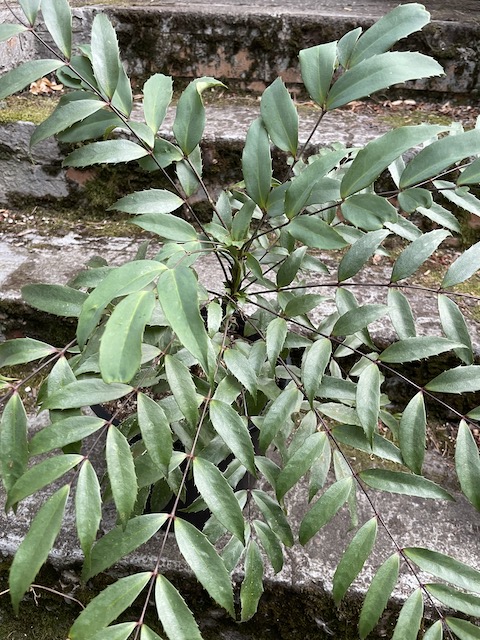
6.) Mahonia eurybrachteata ‘Cistus Silvers’
Well, here we finally have a lovely plant from Cistus Nursery that was grown by me. Seeds are sown at work by me (after I clean the berries) and only the best seedlings are selected out from the nursery crops. Our parent plants are planted in the garden. Sean is of course in charge of making all of the best selections but it’s a process I’ve most certainly learned from over the years.
This last year I’ve been better about planting my “babies” out in my own garden, and this was a plant I just knew I had to have at home.
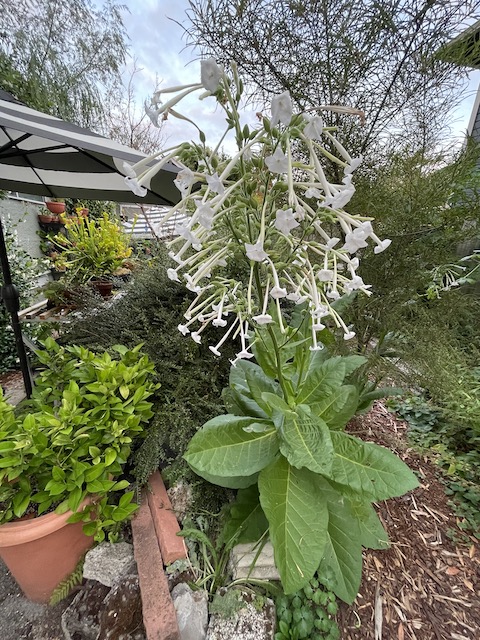
7.) Nicotiana sylvestris
Not sure where the original seeds came from for this plant, but it’s been in my garden for years now. I just let it pour out seeds each year and it is enough for me to pick a few to keep once they germinate in the spring. Nicotiana always makes me think of Grandma Virginia. I keep talking about her own reseeding patch of the jasmine tobacco (Nicotiana alata), but I’ve not yet been able to establish a patch of it. But this, well, it has its spot on the south side of the house.
It’s part of the white theme I have to give off a bit of the whitecaps allusion. It’s the only theme I sort of keep in the garden. This area is part of the Venetian area so of course I need to have a theme to tie all of the garden areas together here. (The back garden is about my childhood and being in my raft beneath the native willows over the creek.)
8.) Phygelius Croftway™ Snow Queen PP18366 or Phygelius ‘Crosnoque’
Whatever the name (see above), this Phygelius is a beauty. It’s also planted in the south side garden along with the Nicotiana sylvesteris. It’s my whitecap plant that blooms almost all summer long, and the gondola (hammock) is behind it.
This plant is very low maintenance. I need to water it and chop it back to keep it fresh, but that’s how some perennials need to be treated and that’s it. Freshening up with a nice chop is also how we make so many plants in containers look good. Not all plants need a nice chop at all, but it is a thing and I tent to enjoy it more now than ever.
It’s just that cherry on top of it all I guess when the plants grow back nicely filled in with fresh foliage.
9.) Pittosporum divaricatum
Many years ago I had my first Open Garden with The Hardy Plant Society of Oregon. I had not been working at Cistus Nursery for very long, and I had not been strong for long after two rather invasive surgeries, so friends stepped in to help me. Sean and my former coworker John from Cistus suggested this Pittosporum divaricatum and I’m really glad that they did. It’s a beauty.
With so many great foliage plants at Cistus, I’m sad sometimes that I’ve not planted more of the unusual ones that we have to offer. I keep trying to add more of them, but if only I’d planted them all back when I started all of this I’d be so much happier now with how things look.
If you’re just starting out and want a great garden, and not just a good one, make sure to add some absolutely stunning foliage plants. These will be the bones of your garden throughout the year and you can use clippings from them in arrangements too. I love that I can make wreaths from mine.
The fun (and the hard work) never ends!

10.) Punica granatum ‘Nana’
Back in the first days here at this house I ordered seeds for this small shrub. I know now that they are not supposed to be great from seed, and that most are propagated from cuttings, but this one worked out from seed for me. It was great for many years, and then I kind of neglected the front garden, then it was great again, then I neglected it again, but now it is back and it looks great this year. It’s a low water plant but it does better with some regular irrigation. Sadly, this is not the climate for growing pomegranate fruit, so I am not disappointed that I cannot eat lots of its fruit, but this is the climate for growing beautiful ornamental pomegranates so I suggest that you try one if you like them as much as I do. If I had more space, I would plant a larger one. There are several great ornamental cultivars.
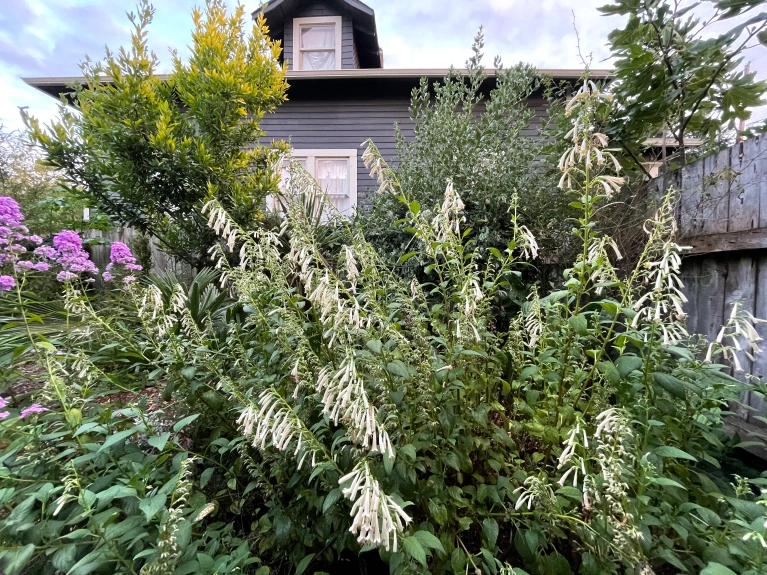
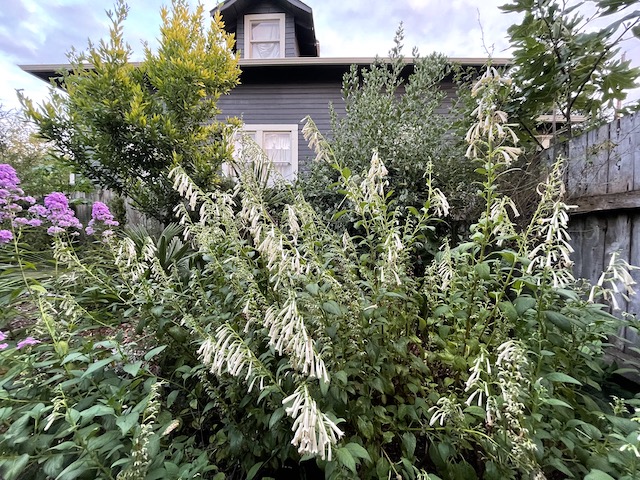
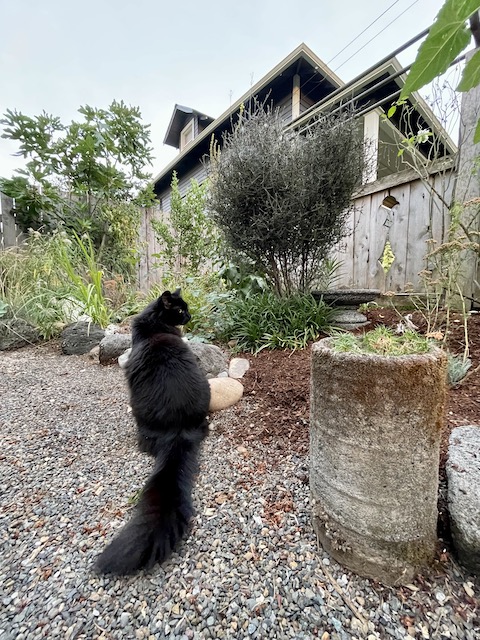



 Created in the sixteenth-century, this is an Italian Renaissance garden. There are many styles of gardens in Europe—and I’m still far from an expert on this subject—but seeing this garden really inspired me to learn more. (I think my next trip will most certainly be a more in-depth exploration of great gardens.)
Created in the sixteenth-century, this is an Italian Renaissance garden. There are many styles of gardens in Europe—and I’m still far from an expert on this subject—but seeing this garden really inspired me to learn more. (I think my next trip will most certainly be a more in-depth exploration of great gardens.)







 It truly is a feast for your eyes and why not send your husband off into the labyrinth? I was fairly certain that Minos was still in Greece and that John would not encounter a minotaur here although I thought about it. That’s what these gardens were intended for, and so I let my mind be transported back to the ancient classical stories of Italy and Greece. (I should also add that all references to Catholicism have been removed. I will get to that in later posts as well.)
It truly is a feast for your eyes and why not send your husband off into the labyrinth? I was fairly certain that Minos was still in Greece and that John would not encounter a minotaur here although I thought about it. That’s what these gardens were intended for, and so I let my mind be transported back to the ancient classical stories of Italy and Greece. (I should also add that all references to Catholicism have been removed. I will get to that in later posts as well.) It should come as no great surprise to you that food is important in Italy and all great Italian gardens will have citrus. The lemon is known to have arrived in Italy during the time of classical Rome.
It should come as no great surprise to you that food is important in Italy and all great Italian gardens will have citrus. The lemon is known to have arrived in Italy during the time of classical Rome. In the next two posts we’ll walk to the top of the garden. This is a garden seen in layers, with so many beautifully designed angles. Everywhere you look, you see beauty.
In the next two posts we’ll walk to the top of the garden. This is a garden seen in layers, with so many beautifully designed angles. Everywhere you look, you see beauty.






